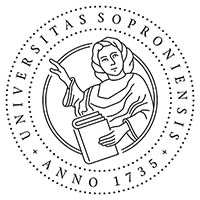Arany János balladáinak alkalmazási lehetőségei magyarórán: a szövegértéstől a nyelvi változatosság tanításáig
DOI:
https://doi.org/10.17165/TP.2019.3-4.14Abstract
Bár a magyar nyelv és irodalom tantárgy megnevezése az sugallja, hogy a két terület, a nyelvtan és az irodalom tanítása együttesen, integrálva történik, tudjuk, hogy ez a gyakorlatban csak ritkán valósul meg. Ez azért különösen furcsa, mert minden szöveg magában rejti a nyelvtani ismeretek, elvek használatának a lehetőségét, valamint fordítva is: a nyelvtan sem független az irodalomtól, hiszen az irodalmi stílus, az irodalmi szövegek nyelvezete és a bennük fellelhető szóképek, valamint az egyes jelentéstani egységek mind-mind egyben nyelvtani kategóriák is. Éppen ezért a nyelvtan irodalomba való integrálása, vagy legalábbis a kettő éles különválasztásának az elkerülése, célszerűnek tűnik. Tanulmányomban ezt – az elméleti vonatkozásokon túl – Arany János balladáihoz tartozó gyakorlatokon keresztül szemléltetem.
Literaturhinweise
Bernáth M. (2016). A szövegértés és szövegalkotás fejlesztése az irodalomórákon. [online] http://www.anyanyelv-pedagogia.hu/img/keptar/2016_4/Anyp_IX_2016_4_5.pdf. [2019. április 11.] DOI: https://doi.org/10.21030/anyp.2016.4.5
Domonkosi Á. 2006. Stíluselemzés, trópusok, alakzatok. Eger: Líceum Kiadó.
Hudáky R. (2016). Tanári segédlet Rakovszky Zsuzsa Fortepan című verseskötetéhez. [online] http://www.aegondij.hu/oravazlatok/Rakovszky-Zsuzsa-Fortepan-segedlet.pdf [2019. november 11.]
Jánk I. (2017). Mi az a PISA-sokk, és mi ez a sok felhajtás körülötte? Nyelv és Tudomány [online] https://www.nyest.hu/hirek/mi-az-a-pisa-sokk-es-mi-ez-a-sok-felhajtas-korulotte [2019. november 24.]
Kiss J. (2011). Nyelvromlás? Magyar Nyelv, 107. sz. pp. 9–20.
Lanstyák I. (2015). A standardizálás mint nyelvalakító tevékenység. Fórum Társadalomtudományi Szemle, 17 sz. pp. 27–56.
Molnár C. S. (2014). Szövegértés: érdeklődés hiányában elmaradt. Nyelv és Tudomány [online] https://www.nyest.hu/hirek/szovegertes-erdeklodes-hianyaban-elmaradt [2019. november 11.]
Sándor K. (2014). Határtalan nyelv. Budapest: Szak Kiadó.
Tóth B. (2006). A szövegértés fejlesztésének elmélete és gyakorlata. Magyar Nyelvőr 130. évf. 4. sz. pp. 457–469.
Woolard, K. A. – Schieffelin, B. B. (1994). Language Ideology. Annual Review of Anthropology, 23. sz. pp. 55–82. DOI: https://doi.org/10.1146/annurev.an.23.100194.000415
A szövegben felhasznált, idézett balladák
Arany János: A walesi bárdok
Arany János: Ágnes asszony
Arany János: Vörös Rébék
Downloads
Veröffentlicht
Ausgabe
Rubrik
Lizenz
Copyright (c) 2019 Jánk István

Dieses Werk steht unter der Lizenz Creative Commons Namensnennung - Nicht-kommerziell - Keine Bearbeitungen 4.0 International.








